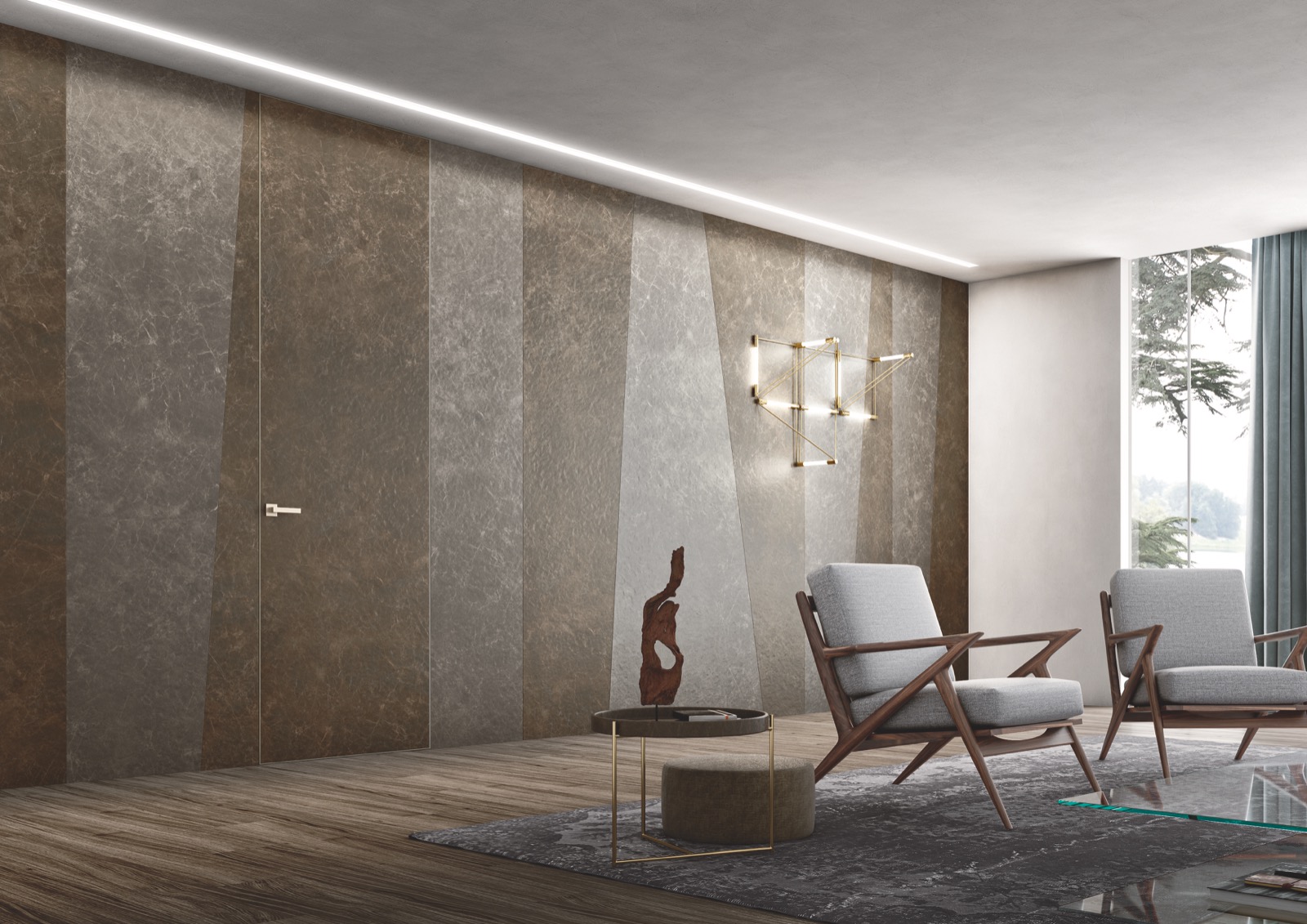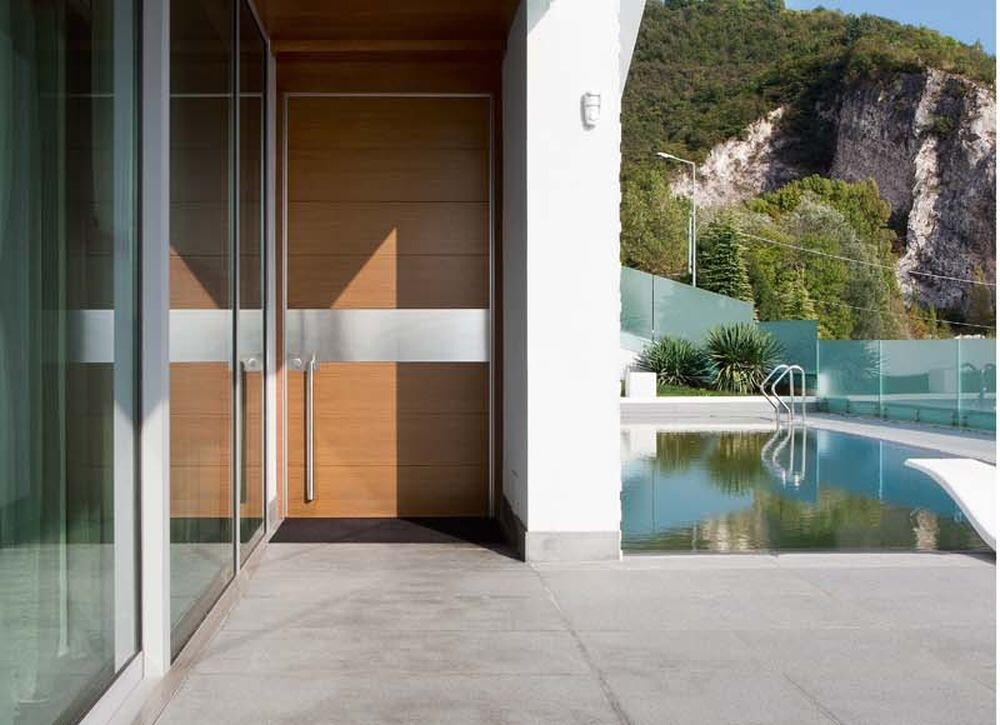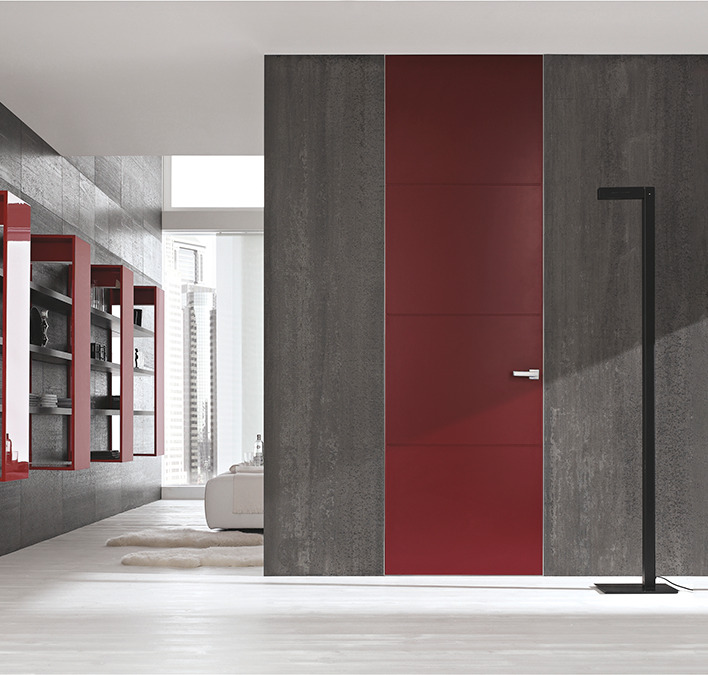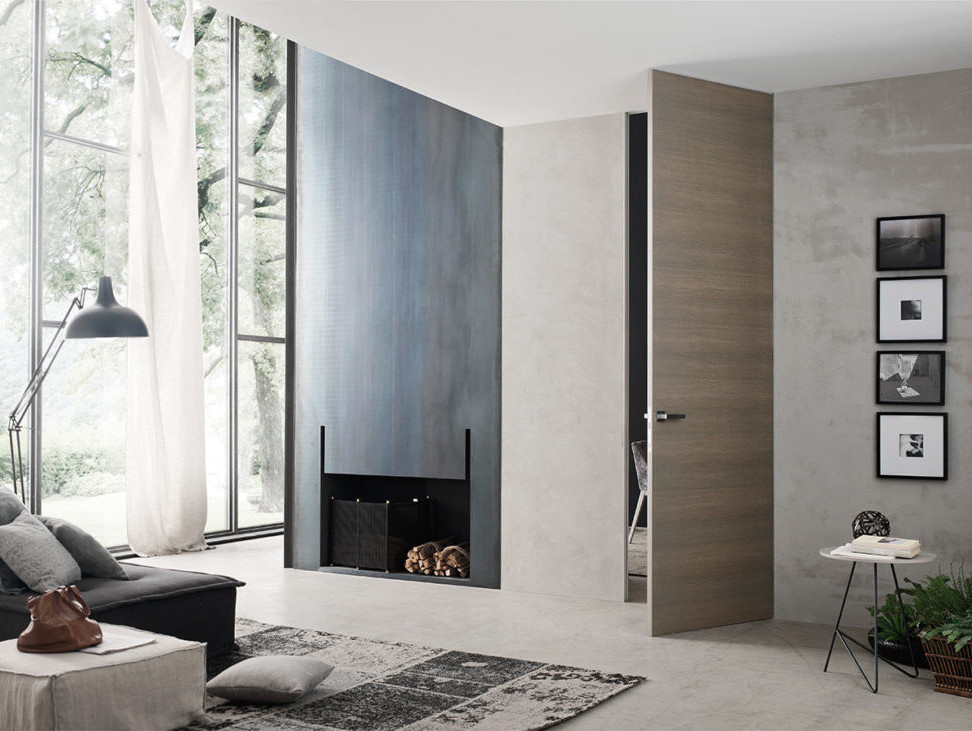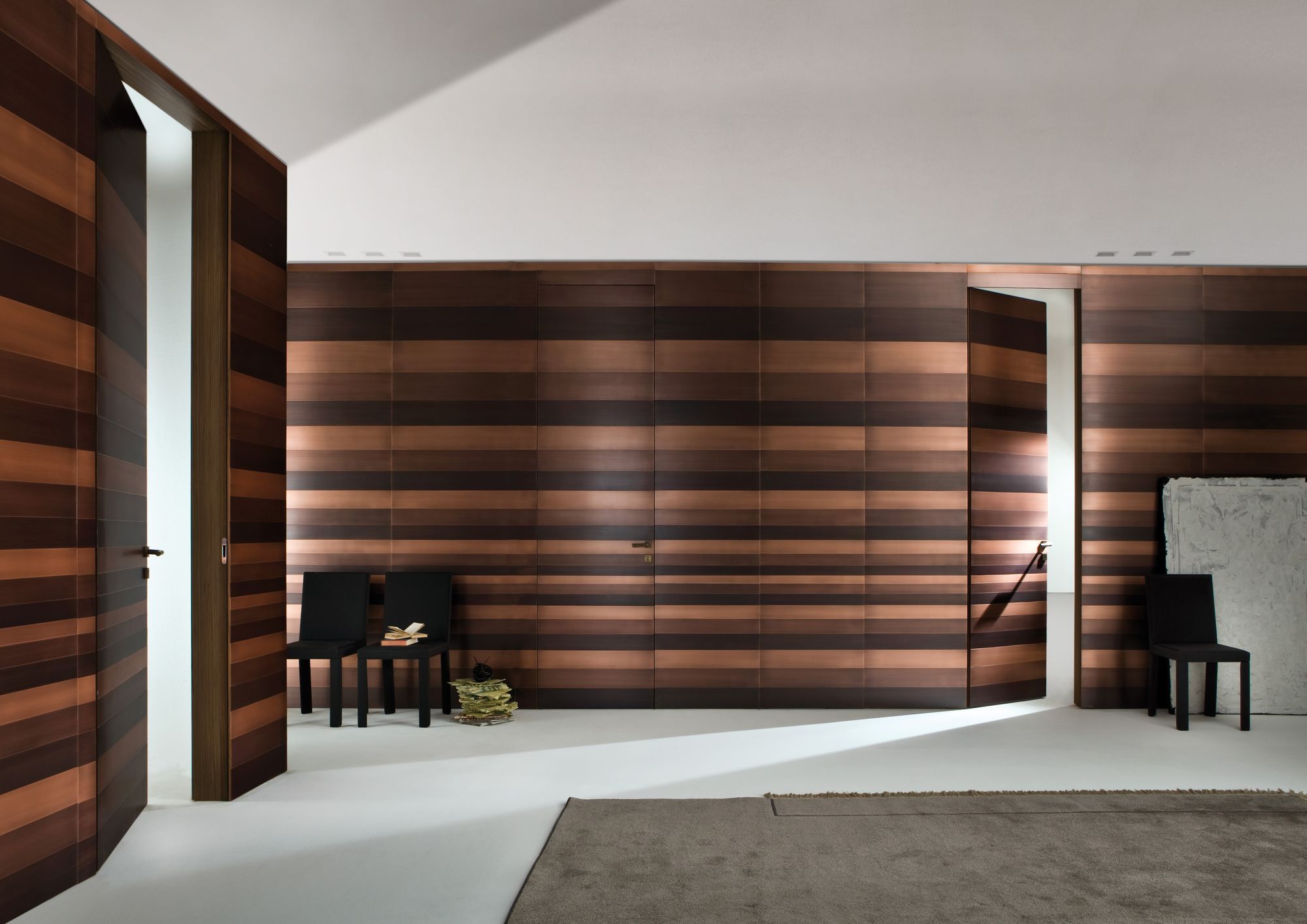“The simple doorway gives little clue to the architectural drama within the temple” (Glancey, 21). Since the ancient times a door was a very important part of people’s life. It provided security and protection from natural forces, which were essential for human survival. (Harari, 48). Over time the door production went beyond those two basic functions and extended to become a part of the decor. Particularly, technological advances of the Industrial Revolution “opened up new ways to convert energy and to produce goods” (Harari, 350), allowing for mass production and the use of new materials, such as iron and steel. Another contributing factor is global warming and pollution, that brought a lot of environmental concerns to light in the minds of the environmentally cautious population, which, in turn, found its reflection in a sustainable door making process.
Since door trends are often influenced by function, consumer demands, and technological advances at the time, a modern door is not only a functional and decorative element of the house, but also keyless, engineered, invisible, and sustainable.
Functional Trend

There are many door types and styles with different practicality and functionality to choose from. As a rule of thumb, a door must reflect the overall style of a home or space, while serving it’s intended purpose. “Purely functional purposes include securing a home, controlling movement between spaces, modulating the influx of the day-light and fresh air, and framing views.” (Fisher, 132). Below are some door types, listed based on functionality (Pojidaeva, 2020):
• Pocket doors: slide into the wall, offering a sleek design, ideal for small spaces.
• Sliding doors: frequently used for closets, eliminating the issue of finding enough room for a panel to swing, as they slide in front of or behind one another.
• Double swing doors: include two door panels, which may or may not have mullion in the middle, allow to accommodate a big opening.
• Double bypass: overlapping doors on the track, which cannot be separated. They work best for closet or pantry.
• Barn doors: hang from a track outside the room, covering the doorway, but leaving gaps at the sides between the wall and the door.
Decorative Trend
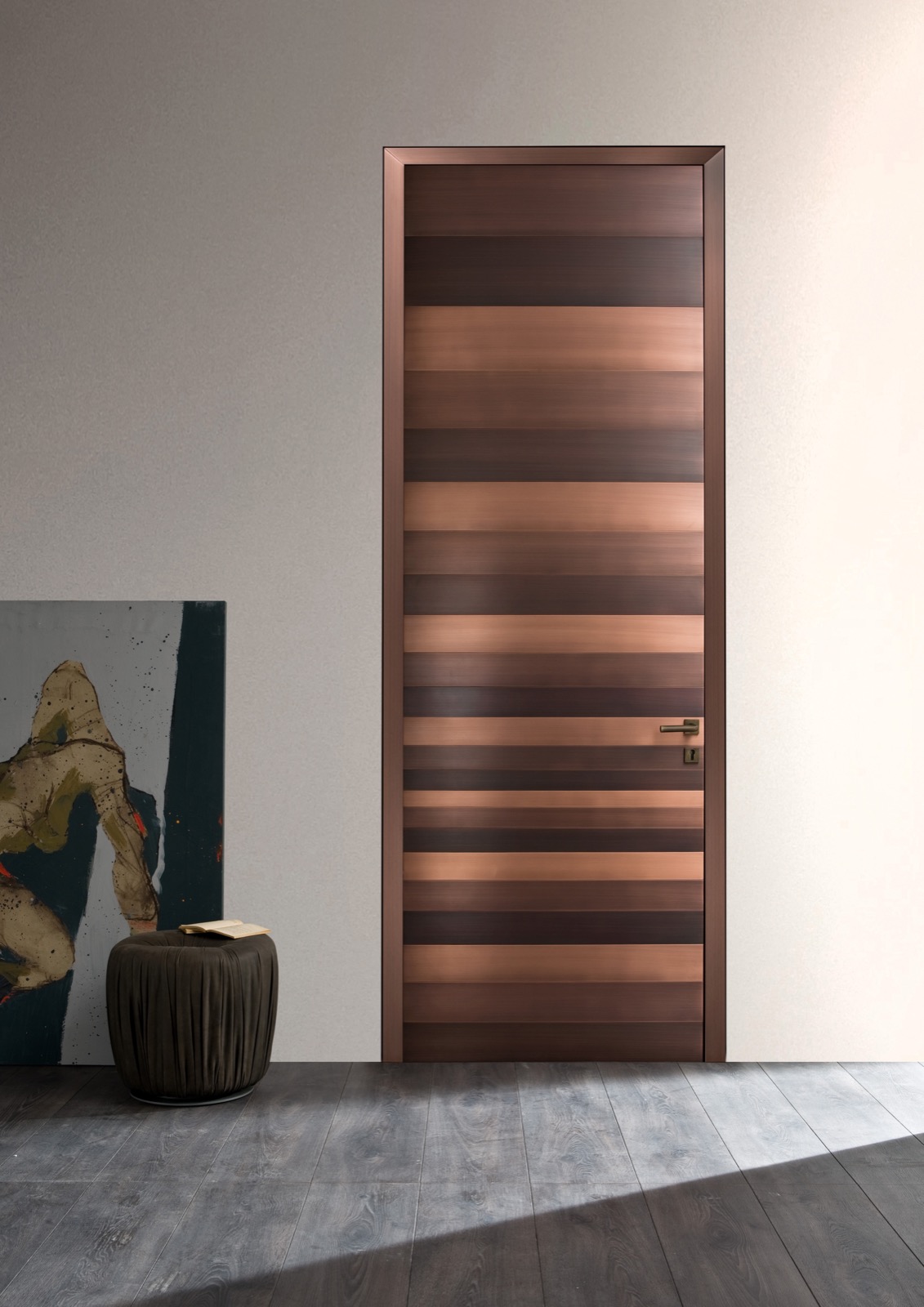
Some of the greatest designers come from Italy. Italian designers and manufactures have been known to use only the best materials and superb craftsmanship in product making process, as a manifestation of “the era of magnificent buildings” (Glancey, 206). Skilled artisans passed on their knowledge from generation to generation. Even today we see resemblances of their mastery and achievements. To the great extent, Italian doors and furniture are considered one of the best in quality and design in all around the world.
Indeed, the decorative aspect and Italian craftsmanship presented strongly in modern doors. In a modern house or building, categorized by clean lines, edges, and large portions of glass, the design of the front door and the other doors will have to follow the style of the home. Besides functionality, modern consumers treat entrance doors as a status statement and interior doors as decorative accessories. As a matter of fact, people’s pursuit for esthetics led to the creation of Gioconda Shine – the most expensive interior door in the world, that retails for $39,000. Gioconda Shine, created by designer Matilde Durante, is made of ecological leather and decorated with 31,000 Swarovski crystals (Pojidaeva, 2015).
Undoubtably, unique designs will always remain a leading trend, as people thrive on creativity of the designers and uniqueness of the products.
Keyless Trend

In the past two decades doors have been equipped with multiple high-tech features, such as keyless locks, fingerprint, and contactless technology. Those features allow for easy access to the property, multiple users, convenience in application.
Homeowners are no longer require a key to operate exterior and interior doors. There are a few “keyless entry” options available on the market (Walsh, 2016). Fingerprint recognition is a simple way to open a door. Fingerprint reader can be seamlessly integrated into the door and does not require keys or magnetic card (Opening Types). Another convenient way to open a door is through the touchpad, which allows entering with the code. A widely used item, such as Smartphone, is another technologically advanced way to open and close a door through an application. Furthermore, there is a ‘control of access flow” feature on the application for the entrance doors, allowing or disallowing access to certain people, which can be pre-scheduled (Opening Types). When key is not an option, card reader with contactless technology might be a helpful and easy way to operate a door.
In the modern word, where technology is changing in the matter of days, spreading in all areas of modern life, including the door production, consumers chose to pay attention to new high-tech door features.
Engineered Wood Trend
Today modern doors combine different materials such as aluminum, wood, stone, glass, and plastic. Most commonly used materials are solid wood, MDF, or engineered wood.
MDF is a popular material in a door today. Doors made of MDF are stable and do not fade over time, as with wood. They are also smooth and suitable for painting. Therefore, they can fit into a variety of interiors. Compared to both steel and wood, fiberglass requires the least amount of maintenance, it does not have to be repainted regularly. They do not chip or dent like wood or steel. Fiberglass doors generally have a wood grain texture, that has been molded onto the door, which gives the appearance of natural wood, once it has been stained or painted. Typically, glass doors are used for the backside of a house, office, or even bathrooms. They are a direct walkway to light in your home or office. Glass door types usually need more effort to upkeep. Evidentially, they are generally much heavier, than other doors.
While wood doors offer unlimited interior and exterior color options as well as multiple panel options, they are not as durable. Consequentially, they can be prone to expansion or shrinkage due to fluctuations in temperate or moisture. In addition, adding weight makes them more challenging to install (Mueller, 2017). On the other hand, engineered wood doors withstand variations in temperature and humidity without changes in either physical or visual properties. They are lighter in weight, than solid wood doors, which makes it easier on the hinges, therefore, lasting longer. For those reasons, engineered wood doors is number one door material, that is currently used for modern door production (Pojidaeva, 2020). According to Pojidaeva, these doors are made out of non-linearly stacked pine wood building blocks, that form a grid-like surface with designed opening that allows for respiration and minimum reside expansion. That top surface is a base of MDF board, which is the base to the final finish, high-grade laminate or custom veneer (“Things to Consider When Buying Your Next Door”).
Evidentially, engineered pine wood is number one choice for the construction of doors, because it is customizable, affordable, light weight, and requires less maintenance.
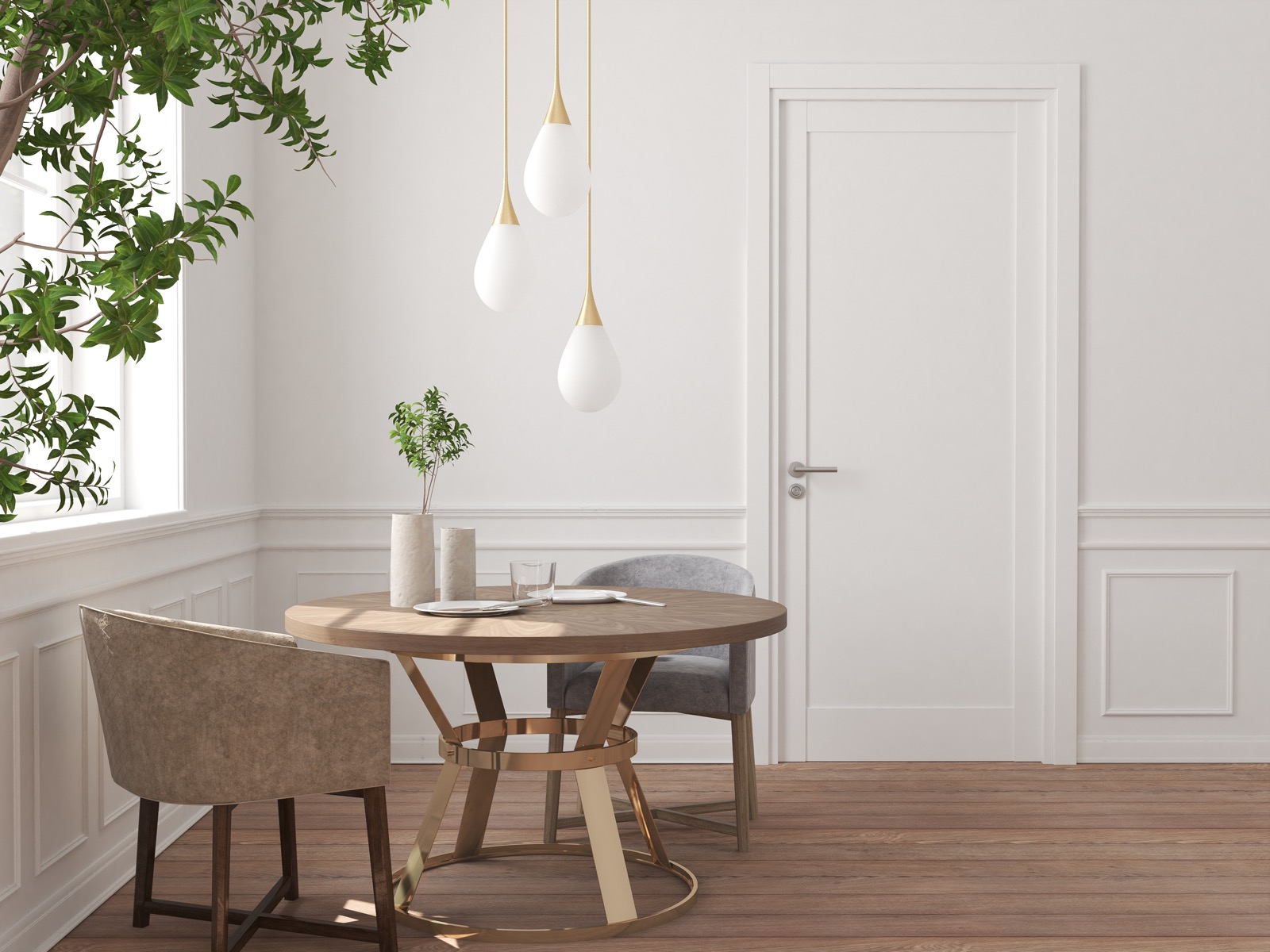
Sustainable Trend
Sustainability is the quality of “causing …. little or no damage to the environment and therefore able to continue for a long time” (Sustainable), which affects the creation of healthy and productive environments. Designers, architects, business owners, and consumers are becoming conscious of the need of goods and services to be produced in ways, that do not use resources, that cannot be replaced. Luckily, this movement seems to be growing, and major organizations have already “galvanized the environmental movement into action” (Glancey, 392).
Many door companies made highlighted contribution in this socio-eco movement toward global green practices. Some use renewable and sustained wood in the fabrication of doors. Specifically, many modern doors are the end product, resulting from a deliberate collaboration of unused and reused wood material, that would otherwise go to waste. (“The Benefits of Sustainability for Architectural Doors”).
In addition to using sustainable wood in the construction, many door companies also utilize a “stacked” approach in the engineering process of doors. Contrary to the “pressing” approach, used by most manufacturers, the strategic placement of wood fragments in a stacked formation has proven to be highly effective in the preservation of the door itself and has been named as a key factor in the reduction of the usual occurrence of swelling and warping, as seen in traditionally pressed wood fabrications. The reason for this is that the air pockets, that are formed as a result of the stacking approach, create a breathable platform for the door and allows expansion where necessary (Pojidaeva, 2).
Many door companies are now use non-toxic, eco-friendly products, that minimize harmful effects onto the environment. Specifically, one particular brand of wood glue, that has been tested and certified by the Consumer Products Safety Commission (CPSC) to ensure that there are positively no harmful chemicals found in its make-up. The benefits of using this alternative are a cleaner work environment, improved air quality, and longer shelf life of the product itself (Pojidaeva, 3). Moreover, many door manufacturers take one step further, by voluntarily subjecting themselves to obtain to a responsible forestry certification. There is a product certification by the Forest Stewardship Council (FSC), that meets the established high standards for ethical production. The wood, that is harvested from such forests, is responsibly managed, socially beneficial, environmentally conscious, and economically feasible (Pojidaeva, 2019).
According to FSC, forests are very important in maintaining comfortable earth’s climate and removing harmful gas, carbon dioxide, from the atmosphere (“Why Forests Matter”). “When making the choice to buy FSC certified wood products, it guarantees that all the trees harvested are replaced, or are allowed to regenerate naturally, minimizing waste and environmental impact.” (Walton, 2021). The FSC also makes significant efforts in preventing deforestation, preserving and protecting rare animals and plants, as well as ensuring better conditions for the people whose livelihoods depend on forests (“Mission and Vision”).
To summarize, it is merely not enough nowadays to create a quality product; it has to be sustainable in a long run to be appealing to a modern consumer.
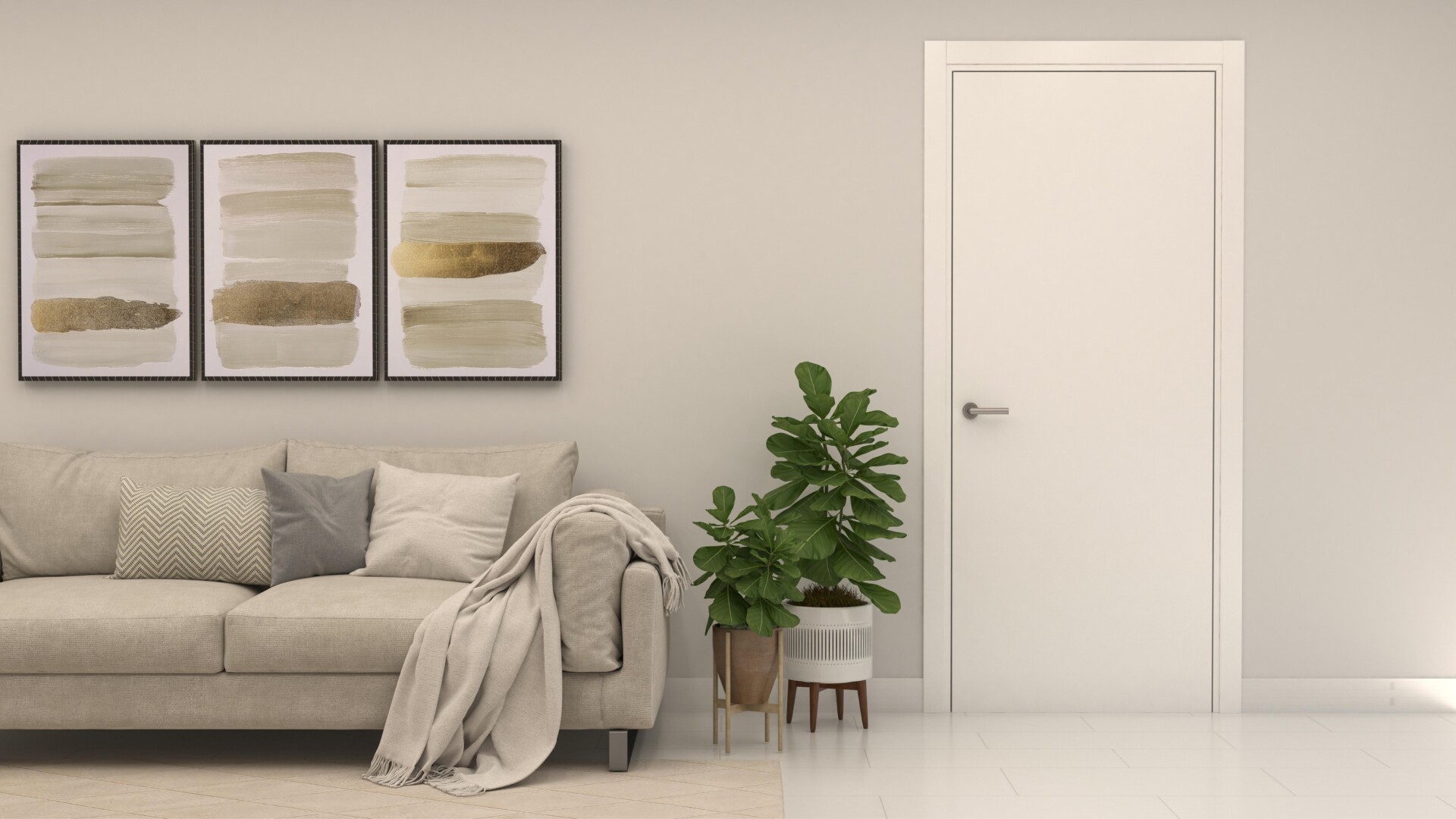
Invisible Doors
A favorite stunner of the moment is the “invisible door,” which blends in with the walls thanks to its frameless, detail-driven installation. Invisible doors, that blend with the drywall partitions and can be painted to match, are in high demand due to the versatility they provide to a space. As Shelly Bowen rightfully suggests the use “hidden doors”, when the interior design goal is to maximize square footage or create “uninterrupted design” (HGTV).
Invisible door has its structural design benefits and, therefore, is the leading door product right now.
In conclusion, consumer door needs have changed over the time, leading toward comfortable consumption, easy and environmentally cautious application with more and more technology integrated into the end product which, in turn, manifested in the latest door trends. Therefore, modern doors are not only functional and decorative, but also technologically and structurally savvy, and sustainable elements of the house.
